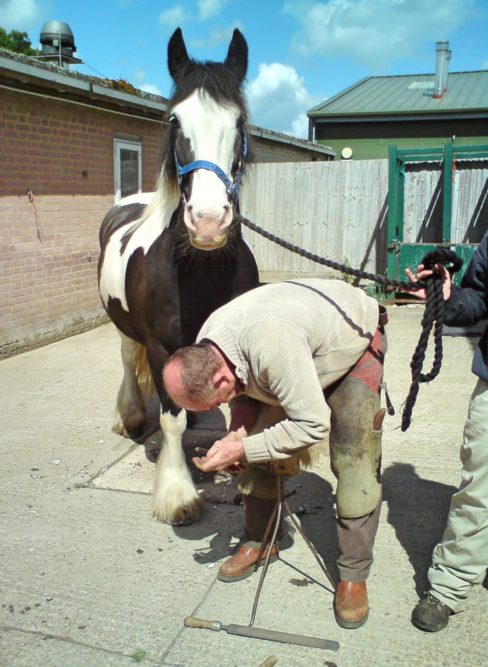The Royal Veterinary College’s graduate diploma in equine locomotor research recently achieved a milestone with its first study being published in a peer-reviewed journal.
The paper, which is titled “The Effect on Tungsten Road Nails on Locomotor Biomechanics in Horses Moving on Tarmac Surface,” examines how road nails effect the horses’ movement symmetry. It was researched and authored by course graduates Lee Collins and Peter Day, who worked alongside RVC academics. The project is the culmination of their work in the equine locomotor research course, which offers professional farriers the opportunity to develop the skill set to produce original research and increase evidence-based farriery. It was published in The Journal of Equine Veterinary Science.
“It is very exciting to see the first peer-reviewed publication that has arisen from work undertaken as part of our graduate diploma in equine locomotor research,” says Thilo Pfau, course director of the grand dip in ELR. “The publication describes the combined outcome of two research projects undertaken by students Peter Day and Lee Collins as part of their degree at the RVC.”
The findings from the study demonstrate that although there are many different horseshoes on the market, as well as various approaches to shoeing and trimming, it’s important to look at the effect of changes in shoeing on the symmetry of movement, rather than the opposite.
The study, which used tungsten road nails, indicates that pelvic movement symmetry in horses trotting on tarmac can be altered by the application of a road nail to the lateral heel of a hindlimb shoe. Subtle asymmetry in pelvic movement can, for example, be quantified as the difference in displacement amplitude between left and right tuber coxae (hip hike difference). The changes in pelvic movement symmetry — observed as a function of applying a road nail — can be explained by increased weight bearing and propulsion in the hind limb with the road nail.
Using wireless inertial measurement units, which were fitted to the poll, withers, sacrum and left and right tuber coxae of each horse, the results indicate that this form of data collection provides a valuable method of evaluating small movement changes of the horse in reaction to different shoeing protocols and shoe types. Movement symmetry is an important parameter influencing longevity and performance, and can be measured irrespective of the surface (firm or soft) the horse is worked on.
“As part of my diploma, I wanted to research something that was relevant to farriery and could be done outside the laboratory,” says Day, who has worked as a farrier at the RVC for more than 20 years. “My hope is that having gained this qualification, I would like to undertake a master’s degree and will carry out further research to evaluate the use of traction devices and shoe designs for grip and propulsion. It is my intention to relate this work on upper body movement to the level of the hoof.”







